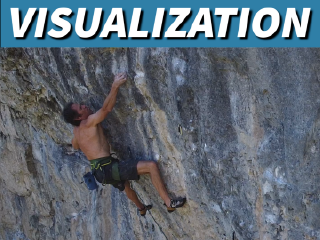Toes to Knows Climbing Academy

Academy: Power Pushup
Climbers need both strength and power. Power is just strength applied quickly. A power pushup is a great way to build power in your antagonistic pushing muscles. No extra weights...
Academy: Power Pushup
Climbers need both strength and power. Power is just strength applied quickly. A power pushup is a great way to build power in your antagonistic pushing muscles. No extra weights...

Academy: Isometric Planks
In the Lyti training summer series, Lyti struggles with doing regular pushups, making it hard to progress the exercise for her. One alternative exercise that works pretty well is an...
Academy: Isometric Planks
In the Lyti training summer series, Lyti struggles with doing regular pushups, making it hard to progress the exercise for her. One alternative exercise that works pretty well is an...

Academy: Visualization
I break down project route visualization into two key areas: Visualizing beta and visualizing success. I use these two sides of visualization to help increase my likelihood of sending. Read...
Academy: Visualization
I break down project route visualization into two key areas: Visualizing beta and visualizing success. I use these two sides of visualization to help increase my likelihood of sending. Read...

Academy: Lyti's Training Plan
Part of our "Toes to Knows" Climbing Academy series--covering climbing from footwork to mental preparation. Tags: Coaching, Hangboarding, Advanced, Intermediate, Training In this post, we go over a training protocol...
Academy: Lyti's Training Plan
Part of our "Toes to Knows" Climbing Academy series--covering climbing from footwork to mental preparation. Tags: Coaching, Hangboarding, Advanced, Intermediate, Training In this post, we go over a training protocol...

Academy: Setting Climbing Goals
Like any significant venture in life, setting climbing goals is a key first step toward success. Matt has recruited his friend and climbing team member, Lyti, in a quest to...
Academy: Setting Climbing Goals
Like any significant venture in life, setting climbing goals is a key first step toward success. Matt has recruited his friend and climbing team member, Lyti, in a quest to...

Academy: Gear, from Start to Multi-Pitch Trad
There is a lot of gear you need to be a well-rounded climber. In this post, we give an overview of gear you might want for several stages of your...
Academy: Gear, from Start to Multi-Pitch Trad
There is a lot of gear you need to be a well-rounded climber. In this post, we give an overview of gear you might want for several stages of your...
